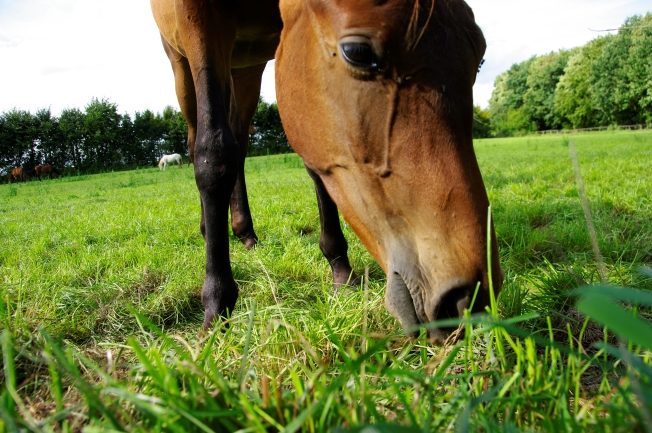By Dr Vicki Glasgow, Harbro Nutritionist
At the time of writing, the national horsey press and social media appears to be full of pictures of lush grass and warnings of the “spring flush” as is usual for this time of year. My initial reaction (as a horse owner in the north east of Scotland) is “if only!” followed by a slightly more professional thought of “well that isn’t the story up here now, but at some point it will be”.
Whatever the weather is like in your area – at some point we will be faced with the spring flush. We have no idea when that will be or what it will look like, but we can give thought to how to prepare for it now.
If you have good doers and lami prone animals, you hopefully have made the most of this episode of weather to get a good amount of weight loss. Right now, in cooler areas of the country there is a small window of opportunity where even more weight loss could be encouraged.
Think about moving ponies on to their summer grazing now before the grass takes a hold and encourage some extra movement especially if they have spent most of winter huddled round hay feeders. Use slow feeder type nets and feeders for forage and no extra feed in the bucket. Remember that even good doers require vitamins and minerals so make sure the basics of the diet are correct. Plan for how you will control grass intake this year – don’t forget that it is a source of uncontrolled calories for good doers.
If you have a poor doer or veteran that struggles to hold condition, then “Dr Green” won’t come soon enough. In the meantime, make sure they are being fed good nutritional quality forage and plenty of it. Find a good quality conditioning feed. If your horse is sensitive to starch (digestively and/or behaviourally) select a low starch cube or mash. Coarse mixes (due to their nature) tend to be higher in starch (there are exceptions of course) so if in doubt best to stick to a cube or mash option.
Even these types of horses need grass intake controlled during the flush times of the year. All changes should be made gradually and this applies to grazing as well. High sugar, low dry matter spring grass can affect those with sensitive tummies and so allowing these guys to gorge on fresh new pasture is also not advised due to risk of colic etc. Gut health supplements should be considered (such as Yea-sacc) and many feed balancers and conditioning feeds contain yeast as standard. As with good doers get your horses on to their summer grazing before it starts to get too lush and/or provide limited access and build up time gradually if you can’t do this. Hay should always be provided at this time of year, even if you shut them away from the grass for a few hours to ensure they eat it. Not only is this crucial for gut health but is also a protectant against grass sickness. Again, plan for managing grazing this year.

